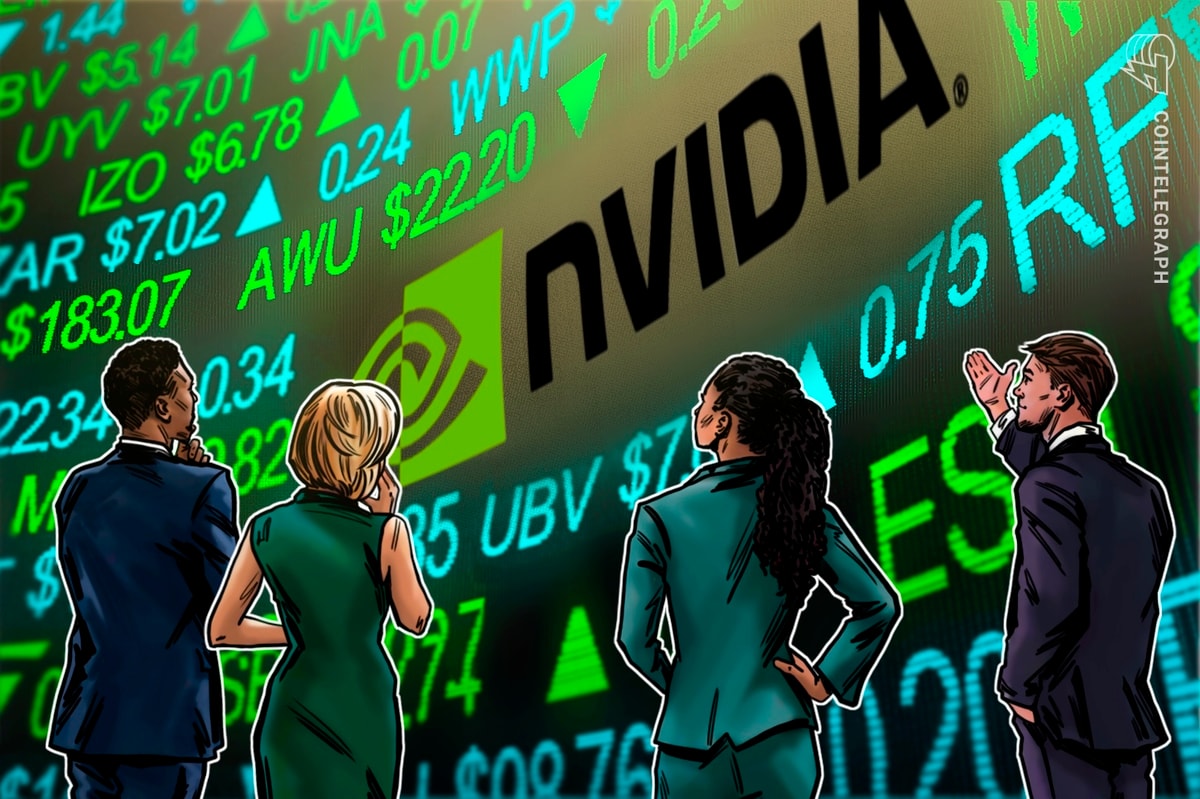Key takeaways:
-
Bitcoin’s correlation with Nvidia has risen to 0.75, its highest level in a year.
-
Analysts fear that such a correlation could cause the price of BTC to drop by up to 80%.
Bitcoin (BTC) and Nvidia (NVDA) stock are now moving more in sync than at any time last year. This has some market watchers worried about a looming crisis similar to the dot-com bubble era of the late 1990s.
Risky AI-on-AI Deals Raise Crypto Downside Risks
BTC’s 52-week correlation with the world’s top chipmaker rose to 0.75 on Friday. It occurs in the same week that Nvidia and Bitcoin valuations reached new record levels.
Nvidia’s share price has soared 43.6% so far this year, topping $195.30 on Thursday, while Bitcoin gained 35.25% to over $126,270 on Monday.
The continued rally suggests that traders may be treating Bitcoin as a high-beta tech asset. However, the parallels are also fueling fears of an AI bubble, with some analysts drawing comparisons to the dotcom mania of the late 1990s.
Market commentator The Great Martis said the AI and cryptocurrency rally may represent a “double bubble.”
The rise of AI-linked deals underscores the frenzy. This week, OpenAI agreed to spend tens of billions on AMD chips over several years, and AMD is set to make OpenAI one of its largest shareholders.
The move is creating a circle of investment among a select group of artificial intelligence companies. For example, OpenAI has signed a $300 billion deal with Oracle.
Oracle itself acts as a strategic IT partner for Nvidia, which, by the way, plans to invest $100 billion in OpenAI.
Both Nvidia and OpenAI are also investing heavily in another cloud company, CoreWeave. Nvidia has purchased its services worth $6.3 billion, while OpenAI has pledged up to $22.4 billion.
In short, these AI giants fund each other, keeping the money spinning within the same small circle. As AMD joins in, analysts are calling this self-reinforcing investment cycle a “big red flag.”
Parallels can be drawn to the dot-com bubble, when Cisco financed equipment purchases, effectively fueling demand for its own networking infrastructure and inflating valuations until the bubble burst.
“People often forget that the dot-com bubble caused the Nasdaq to drop 80%,” The Great Martis said, adding:
“Today, similar irrational exuberance and a trillion-dollar crypto sector re-establish a Ponzi scheme.”
“AI, Crypto, Quantum, Nuclear” Bubble Warning
Trader and educator Adam Khoo warns that the current AI and cryptocurrency boom may make Bitcoin one of the biggest losers when it ends.
Related: Crypto treasury companies pose a risk similar to the dotcom bust of the 2000s
Khoo recalls that during the 2000-2002 crisis, Warren Buffett’s Berkshire Hathaway gained 80% by completely avoiding the technology sector and maintaining profitable companies such as Coca-Cola, American Express and Moody’s.
“Money ran out of technology and flowed into everything that wasn’t technology,” says Khoo, adding
“When the AI/Crypto/Quantum/Nuclear bubble bursts, overvalued and unprofitable names in these sectors will fall by 50% to 80%.”
Buffett does not own shares of Nvidia or AMD, nor does he own “rat poison squared” BTC. Instead, it sits on a record $350 billion cash pile, echoing Berkshire’s cautious stance before the tech bubble burst in 2000.
“When the AI/Crypto/Quantum/Nuclear bubble eventually bursts, overvalued and unprofitable stocks in these sectors will fall by 50% to 80%,” Khoo warned.
This article does not contain investment advice or recommendations. Every investment and trading move involves risks, and readers should conduct their own research when making a decision.





